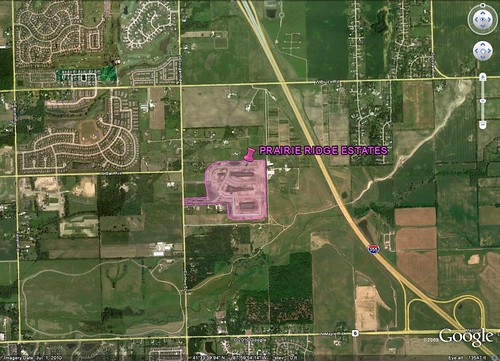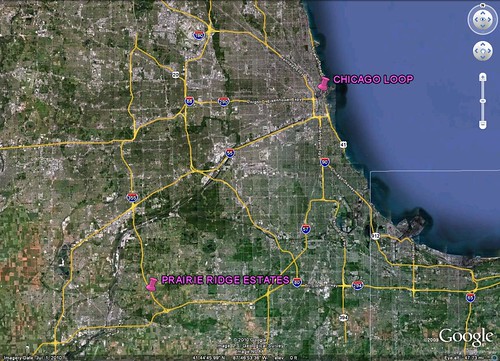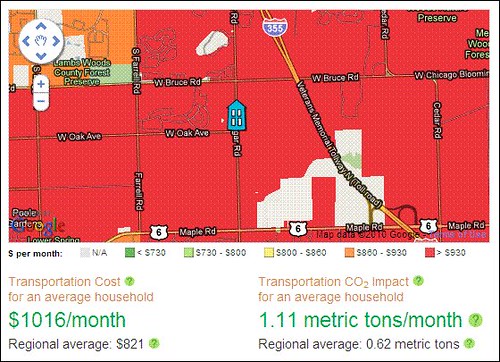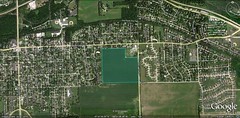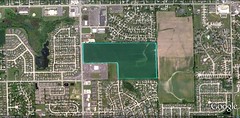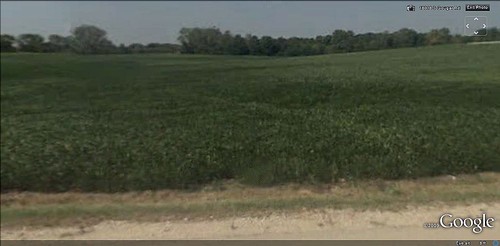What does 'net zero' mean? Sprawl by another name?

Posted August 19, 2010 at 1:11PM
Prairie Ridge Estates, a single-use, single-family residential subdivision being constructed on farmland 40 miles southwest of Chicago, is billing itself as ‘the nation’s first net zero energy community of custom designed homes.' The suggestion is that, if you purchase a home here, you're as green as it gets. The development's web site devotes a page to LEED, the green building rating system - featuring the US Green Building Council’s LEED logo, and noting the following:
“In an environment where we face increasing energy costs and have a heightened awareness of environmental responsibility there needs to be an alternative. That alternative is Prairie Ridge Estates, a community of 132 net-zero energy homes in New Lenox, Illinois, that can produce as much energy as a typical family consumes.
“Built using Insulated Concrete Forms (ICFs), concrete walls encased in a highly engineered insulating foam extend from the foundation to the peaks of the roofline. The homes begin with a shell that is exponentially more efficient than traditional 2"x4" framed houses and are then combined with appliances and technologies that squarely focus on efficiency. From electricity to water to air quality, efficiency has driven the careful and deliberate selection of each window, appliance, and infrastructure system. While a Prairie Ridge Estates home will look and feel just like other homes it will perform unlike any other home, producing its own energy with wind turbines and solar panel systems. The homes also use designed systems, such as closed-loop geothermal, that limit energy consumption by as much as 80%. The result is a standard LEED Gold certified home that can easily achieve Platinum certification with minor design modifications.”
So far, so good, I suppose. Those are laudable elements of green building design.
But, um, how can you be net-zero if you have to drive long distances to do anything? The closest intersection to the construction site that has roads with names in Google’s data base is the intersection of South Gougar Road (Will County highway 52) and West Oak Avenue (79th Street). That’s two-tenths of a mile from the entrance to the subdivision and a third of a mile from the heart. The Walk Score for that intersection is, well, ZERO. I think that’s a different kind of ‘net zero’ than the developer is claiming, though.
Remember Abogo, from last week, the tool that measures likely transportation costs and average transportation emissions from a given location? I ran Prairie Ridge's location through Abogo, too: average transportation costs per household are 24 percent higher than the regional average, and carbon emissions from transportation are nearly twice the regional average. How green does that sound? What might happen to the ‘net zero’ claim if the 1.1 metric tons of carbon dioxide emitted every month by households in the Prairie Ridge location – and the energy consumption they represent – were factored into the equation? And what about the claimed energy cost savings, if you're shelling out $200 more each month for transportation than the average household in your metro region?
According to the web site, "lots average 1/3 acre in size. Floorplans start at 2,500 square feet. and lots can accomodate homes as large as 6,000 square feet."
Incidentally, while noodling around Google Earth I found an empty parcel of suburban infill about four miles away in Joliet (below left) of about the same size as Prairie Ridge that would at least bring the Walk Score up to 31, and lower carbon emissions by around 34 percent, compared to Praire Ridge. A few miles west of that one is another suburban infill parcel (below right) that would raise the Walk Score to 66. Both of those are still above average in costs and emissions but infill can at least begin to retrofit suburbia to something more sustainable. Shouldn't alternative sites similar to those be preferred over totally unwalkable farmland?
Prairie Ridge's environmental shortcomings are not emphasized in the mostly glowing article written on the new development in the Chicago Tribune earlier this month by Mary Ellen Podmolik - but the writer, to her credit, does observe that “The homeowner's commitment to a green philosophy is a question mark, starting with daily commuting practices: Anyone driving 80 miles round-trip to Chicago in a SUV probably loses the right to claim a green lifestyle.” You think?
The LEED page on the developer’s web site mentions, after the passage quoted above, that “LEED for Neighborhood Development extends the benefits of LEED beyond the building footprint into the neighborhood it serves.” Well, yes, if you meet the requirements. But look where Prairie Ridge is. This photo was taken right across the county road from the entrance:
This is not true green development but exurban sprawl. One can earn LEED building certification pretty much in the middle of nowhere, unfortunately, so they may well accomplish that part. The developer seems to be claiming that the homes-to-be already have qualified for LEED-gold and that a builder can make easy adjustments to a building plan to enable the purchaser to aim higher and obtain a LEED-platinum rating.
But there is not a chance in hell that Prairie Ridge is earning LEED-ND certification for smart, green urbanism. If it does, there is something very wrong with LEED-ND. And I would add that, if something in this location, with these transportation characteristics, is awarded a LEED-platinum rating under the LEED for Homes criteria, there is something very wrong with that system, too.
Move your cursor over the images for credit information.
